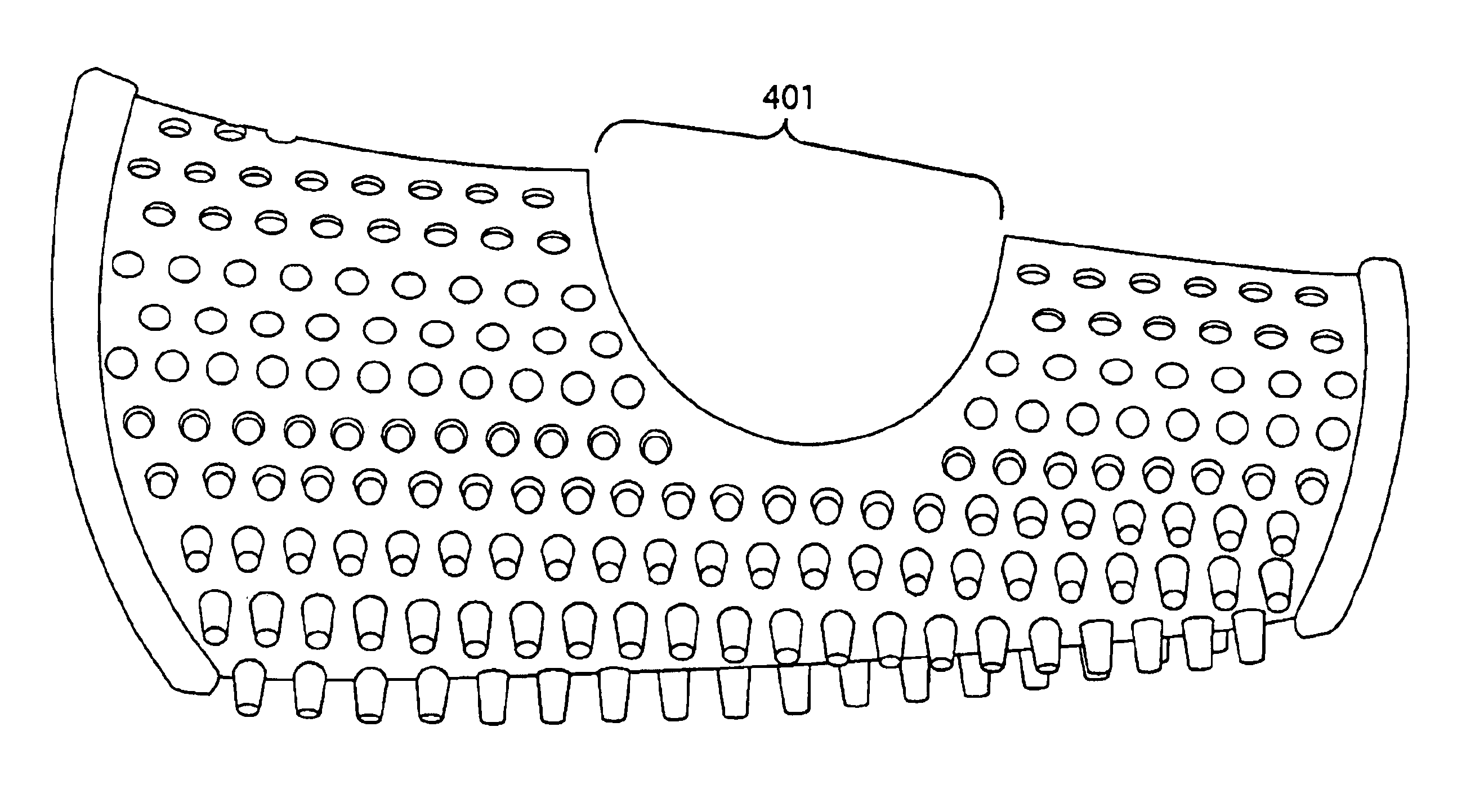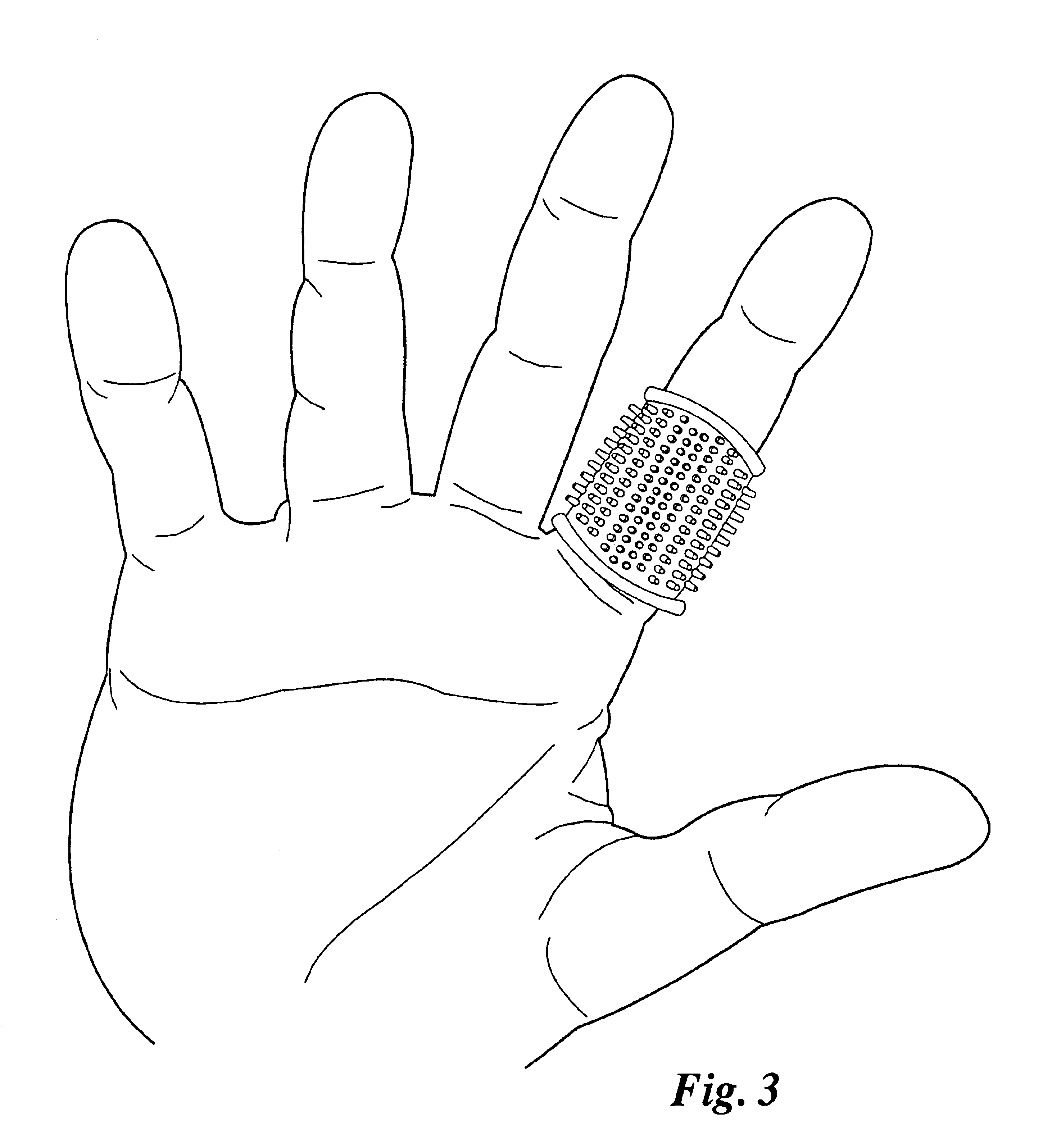Skin protection device for fingers and/or thumbs
a technology for protecting devices and fingers, applied in the direction of protective clothing, garments, applications, etc., can solve the problems of blisters, sores, cuts, irritation, athletes involved in sports, etc., and achieve the effect of maximum movement, ventilation, and tactile sensation
- Summary
- Abstract
- Description
- Claims
- Application Information
AI Technical Summary
Benefits of technology
Problems solved by technology
Method used
Image
Examples
Embodiment Construction
In one embodiment, the device includes a sheath with two holes for ingress and egress of a digit, where the digit protrudes from the sheath. As such, a portion of the digit is protected while another portion may contact the chosen implement such as a golf club, putter, baseball bat, or tennis racket. Typically, the sheath is configured to fit tightly about the digit to prevent abrasion and to provide the maximum tactile sensation. Desirably, the sheath is light-weight and unobtrusive.
The device includes at least one projection that extends out from the surface of the sheath. The projection may aid the user in gripping the chosen implement and may also provide additional cushioning. The device may include a plurality of projections for additional gripping / cushioning feel. The projections may be located on a portion of the sheath that is in direct contact with the chosen implement to aid in gripping or cushioning. For example, the projections may be located on the palmar face of the s...
PUM
 Login to View More
Login to View More Abstract
Description
Claims
Application Information
 Login to View More
Login to View More - R&D
- Intellectual Property
- Life Sciences
- Materials
- Tech Scout
- Unparalleled Data Quality
- Higher Quality Content
- 60% Fewer Hallucinations
Browse by: Latest US Patents, China's latest patents, Technical Efficacy Thesaurus, Application Domain, Technology Topic, Popular Technical Reports.
© 2025 PatSnap. All rights reserved.Legal|Privacy policy|Modern Slavery Act Transparency Statement|Sitemap|About US| Contact US: help@patsnap.com



